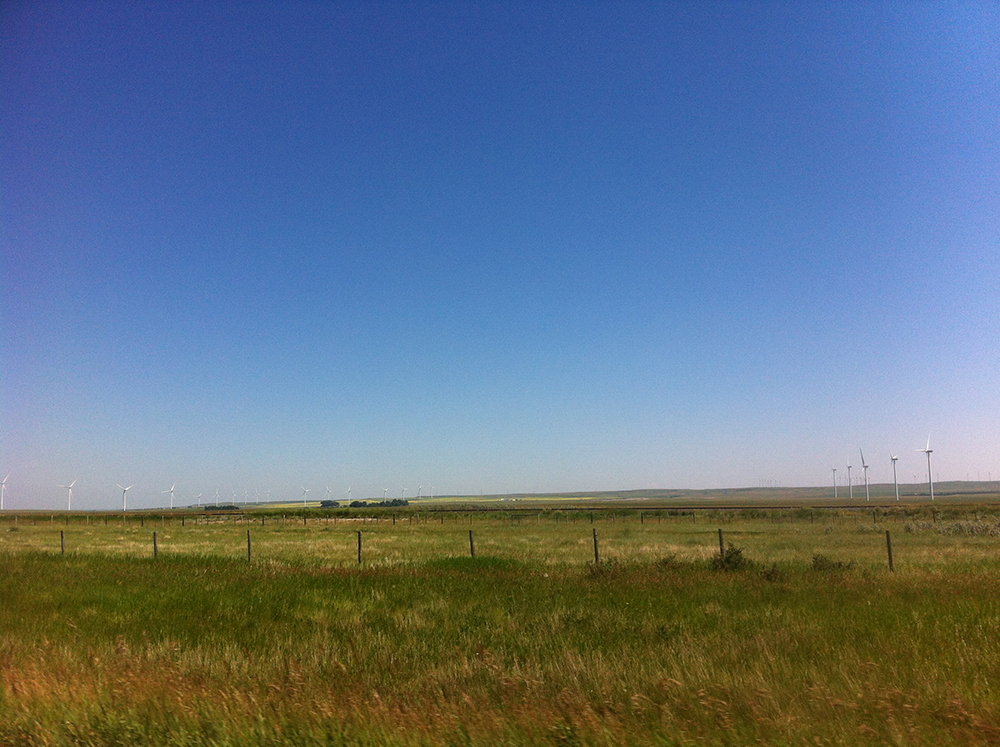
Wind turbines near Pincher Creek
On a recent road trip to southern Alberta, I spent some time at a place I had only ever heard about and had grown to mythic proportions in my mind. At first glance, Head-Smashed-In-Buffalo-Jump is a little underwhelming after a long drive through the gorgeous Alberta foothills and the stunning Crowsnest Pass. Driving along the highway to the UNESCO World Heritage Site through grassland, I double checked the map to make sure my travel companion and I had not missed a turn. We pulled into a huge parking lot where we were met by a short bus. It shuttled us to the main entrance about 100 meters away.
It was too hot for words. Without speaking we walked past the Interpretive Center, headed straight for a trail that led us in an oblong loop around a grassy plain. As we walked along the path silently, the rock face rose out of the seemingly endless prairie. It was not as high, or as violent, as in my imagination. The interpretive panels explain the drop used to be more drastic, but over time the bones from the slaughtered animals built up at the bottom of the cliff in a layer ten feet thick, representing nearly 6000 years of use. Each buffalo drive killed so many animals that they would have to start butchering them before the hunt was finished. Layers of charred bones found by anthropologists showed leftover parts were burned every so often so the Buffalo would not smell the rotting remains and sense danger.
Contrary to what you might believe, the name actually comes from the story of a boy—too young to be part of the hunt—who hid in the shelter of the cliff to watch first-hand as the Buffalo dove to their deaths. At the end of the day, when the animals had all been taken away, they found the boy at the bottom with his head smashed in.
Near the end of the trail was a teepee. Of course, its not the first time I've seen one, but it felt like I was seeing it for the first time. Here in its natural place, the efficiency and simplicity of the shelter hit me. A cone for living. The canvas was painted with graphic black and white geometric patterns that stood out against the yellow fields of dried grass stretching out in all directions.
Every summer, the Blackfoot tribes gathered here for communal hunts and ceremonies. I wished I could see the camp in full production mode, efficiently processing meat for the winter, making pemmican, living harmoniously with the land. Somehow I could feel the presence of a sea of teepees; I pictured hundreds of canvas peaks covering the grassy campsite. For me, that is the real attraction of Head-Smashed-In-Buffalo-Jump: the origins of urban form in Alberta.